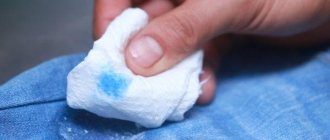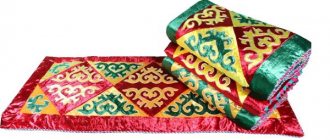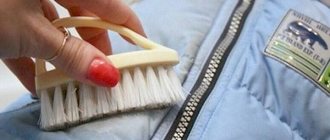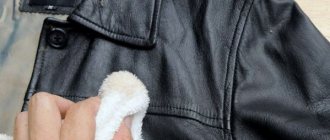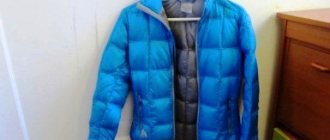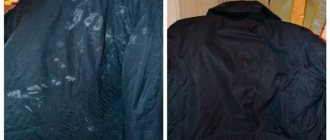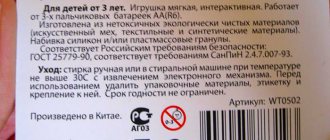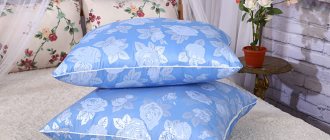How to strengthen the seams of a down jacket
If updating the lining is not required, then it is enough just to strengthen the seams. This is done as follows:
- the seams are sewn again;
- the seams from the inside of the product are stitched together with a strip of fabric or satin ribbon;
- the seams are treated with wax, for this you need to light and melt a candle (it is important not to make holes in the lining due to the hot product);
- hairspray also strengthens the seams, but it has a sticky property, so the material of the clothing worn under the jacket will stick to the seams;
- treat the down jacket in a mixture of glue and water; if the procedure is performed incorrectly, there is a risk of permanently ruining the clothing.
We suggest you read: Air mattress deflates - what to do and how to repair
The padding polyester is coming off the jacket, what should I do?
In this case, you can remove the fluff only for a short time using a sticky roller or vacuum cleaner. If you see white fluff on the surface of a product, you need to be prepared for the fact that its service life has come to an end, and it is unlikely that it will be possible to correct the situation. There are methods that have many disadvantages and are therefore considered risky.
To strengthen the internal seams, you can spray them with strong hold hairspray. Once they become sticky, they will stop letting the filler through. However, when using this product, it should be taken into account that after treating the seams with varnish, they can catch the fibers of underwear.
This method is considered the simplest. When washing again, 3 rubber balls are placed inside the drum. Regular tennis balls will also work.
Try treating the seam where the fluff is creeping in with hairspray
There is another extreme way to deal with the filling that comes out - soaking the down jacket in a solution of PVA glue and water. The procedure glues the feathers of the filler and they no longer come out through the fabric. But after such soaking, at best, you will have a jacket from which fluff will not escape, and there is no need to talk about its warmth. If the outcome is unfavorable, you will ruin an expensive item forever.
Separately, it is necessary to say about children's clothing. Use only safe methods to restore children's clothing. Save the glue and varnish for experimenting with your down items.
To prevent the filling from leaking out of down jackets: preventive measures
The only preventative measure in the case of filler escaping from a down jacket is proper care of the product:
- try to wear down items carefully so that they do not have to be cleaned frequently;
- organize proper storage for them in canvas bags;
- read information about proper care on labels and special inserts;
- trust cleaning of jackets only to professionals who guarantee the quality of their work;
- wash down jackets correctly, following the manufacturer's information on the liners:
- use the most gentle surface treatment methods without soaking;
- if you really can’t do without a washing machine, follow the correct thermal regime, spin only at low speeds, do not use conditioners and powders;
- dry the down jacket no longer than two days.
This unit will also help with the problem of eliminating padding polyester that has gotten into tangles. The principle of its operation is similar to the previous method, but in this case, another function is connected to solving the problem - the effect of steam.
How to reduce the amount of filling in a jacket
Often women make purchases in a fit of emotion. A seemingly beautiful jacket that fit perfectly in the store, but upon closer examination at home turns out to be not quite the same shade, style, or even volume.
Of course, you can return it to the seller if you are not satisfied with the size or model. But what to do if the new thing fits all the parameters, but due to the abundance of insulation inside it looks like a life jacket?
There is only one way out - to reduce the amount of padding polyester. To do this, there are several ways:
- Rip the lining and gradually remove the insulation, making sure that there is not too little left, and then join the fabric again.
- Sew the jacket. At the same time, the amount of insulation and, accordingly, the size of the item are automatically reduced.
- Give it to the studio.
- Iron with an iron with steam function. When ironed, the synthetic winterizer “tramples down”, due to which it decreases slightly in volume.
To learn how to properly straighten the insulation in a jacket, we advise you to watch videos that cover this process in detail. The recommendations will be useful to every housewife, since the problem occurs quite often. And preventive measures can reduce the likelihood and completely avoid this trouble.
Eliminating the defect by updating the lining
A similar effect can be achieved if you use a laundry conditioner with antistatic properties. However, the product quickly loses these qualities during wear. The lint appears some time after washing.
If the padding polyester in your winter jacket has gone astray, what to do in such cases will help you find out a video of the simplest technique - straightening it with your fingers. This process is long and labor-intensive. In order to smooth synthetic insulation using this method, after washing and drying the clothes, you should carefully align the balls with your hands through the fabric. Your main assistant in this matter is patience.
Reinforce the internal seams with hairspray, which will make them sticky and keep lint out. But they will snag the fibers of the clothes you wear under your jacket.
Carefully remove the filling and place it in a bag. When working with down, do not allow drafts to occur - close the room.
Can this be called marriage?
If fluff has passed through the fibers of the material even before use, we can say that the product is defective. This means that low-quality materials were used in production. Outwardly, such down jackets look attractive, but lint may appear even during the first try-on. You can purchase similar wardrobe items at open markets and markets.
Defects in the form of fluff appearing are not always immediately visible. Lint comes out at the initial stage of use of the product, often before the first wash. Other cases are only a consequence of improper care.
Why does fluff come out of a down jacket inside and outside?
Strictly follow the manufacturer's recommendations for caring for the product. In most cases, down jackets are washed by hand or in a washing machine on a delicate cycle at a water temperature of no more than 40°C.
It’s better to do this in a workshop, but if you know how to sew, you can do the work yourself:
- Open the lining and collect the fluff and feathers.
- Detach the parts (sleeves, shelves, back) from each other.
- Pin them to the fabric you plan to use for the new lining.
- Trace and cut out the pieces, leaving a 1cm allowance on each side.
- Topstitch the vertical seams of the sleeves and sew these parts to the cuffs of the jacket.
- Distribute the filler under the lining.
- Sew the seams on the sleeves where they were originally.
- Sew shoulder and side seams. Sew the bottom of the lining to the bottom of the jacket.
- Place the filling on the back and sides of the down jacket.
- Sew the inside seams of the lining where the down jacket was previously quilted.
- Sew the sleeves to the vest lining.
Check the reverse side of the product carefully. If there is a hole somewhere where the filling is coming out, sew it up.
To completely change the lining of a down jacket, you should adhere to the following recommendations:
- Trim away the old lining using small scissors.
- Take out the filling and put it in a bag, tie it tightly. First make sure that the room where the work is being done is free from drafts, pets and children, otherwise the fluff will scatter throughout the house.
- From the old lining, make patterns for the new one, first cutting it into its component parts.
- When you cut out a new lining, you need to take an allowance of 1-2 cm on all sides.
- First, the details are sewn along the shoulders and sides. Fill the lining with down, distributing it evenly over the entire back area.
- It is necessary to sew the lining intended for the sleeves to the main part. The seams must be strong, so it is better to devote more attention and time to this work, making several seams in one place.
- Machine stitch all basted seams to secure the result.
Down or padding polyester comes out of a down jacket or jacket: the main reasons
Vacuum your down jacket. This will solve the problem for a while, as you will collect all the fine fluff that has come out or is about to do so through the lining or seams.
It should be borne in mind that in reality the implementation of the listed procedures is much more complicated than it might seem at first glance. If there is even the slightest doubt about your own abilities, it is better to use the services of an experienced seamstress to replace the lining.
There are not so many methods, some of them are less effective. This is due to the fact that the problem of the appearance of fluff and feathers is itself complex. This means that using fantasy in an effort to save a thing will not help. There are several options for what to do if small fluff comes out of your down jacket to solve the problem:
- Using a vacuum cleaner and antistatic agent.
- Treating the product with hairspray.
- Applying water-repellent shoe polish to the material.
- Replacement of the entire lining.
- Adding another layer of lining.
The synthetic winterizer is getting through the lining, what should I do?
In the second case, feel free to go to the store where you purchased the product before the warranty expires. Lost fluff at the beginning of wear is the first sign of a manufacturing defect. Either the filling or the lining was clearly defective in the product, and you should not suffer because of this. Certain standards have been established for tailoring outerwear.
I have black windproof taffeta, it's like a down lining. black color. will it suit you? The coat length + sleeve length is probably enough for you.
It happens that a down jacket is damaged in the dry cleaner. In this case, you can demand compensation from the performers. But it is not always possible to achieve this, since dry cleaning often does not guarantee the quality of the work performed, for which they first ask you to sign an agreement. We advise you to choose dry cleaning in the future that provides a quality guarantee.
In cases where a complete replacement of the lining is required, there are 2 approaches: sewing new fabric over the old one or removing all worn-out material and then replacing it.
If the jacket is inexpensive and purchased from a dubious place, it is better not to take risks, but to prefer surface treatment without soaking to complete washing.
If feathers come out from the outside, it doesn’t look very nice, but if they come out inside, it’s unpleasant and uncomfortable. And it is simply impossible to wear such a product. Fluff may also creep in because you washed the item incorrectly. This should be done in a delicate mode, without soaking the item. Interesting! Instead of a special steamer, you can use a hair dryer.
Products made from padding polyester have become popular on the market due to their heat-saving qualities, lightness, and ease of maintenance. They are indispensable in the cold season. But users, due to improper care of things, often encounter such a problem - the padding polyester gets lost after washing.
There are not so many methods, some of them are less effective. This is due to the fact that the problem of the appearance of fluff and feathers is itself complex. This means that using fantasy in an effort to save a thing will not help.
Wrong wash. If feathers come out of your jacket after washing at home, it means you did something wrong. Usually the filler starts to come out after washing with soaking or using conditioners. If the jacket is inexpensive and purchased from a dubious place, it is better not to take risks, but to prefer surface treatment without soaking to complete washing.
Sometimes, almost immediately after purchasing outerwear or during its use, light fluff appears in some areas of the material; this is fluff coming out of the down jacket, and many housewives are interested in what to do in such cases. Various methods should be considered to stop the spread of this phenomenon over the entire surface.
Defects in the form of fluff appearing are not always immediately visible. Lint comes out at the initial stage of use of the product, often before the first wash. Other cases are only a consequence of improper care. Another reason for the appearance of fluff inside is the use of thin material when sewing the lining for the product. As you wear it, the down jacket becomes dirty and needs to be washed. If you do this often, the material will become thinner, increasing the distance between the fibers.
To strengthen the lining fabric you will need:
- thread and needle;
- for labor-intensive finishing work - a sewing machine;
- fabric for a new lining or patches if the old one requires repair.
Many people are faced with the problem that fluff is coming out of their down jacket; what to do in this case is the main question that arises. To find a solution to this problem, you first need to find out why the fluff comes out.
Incorrect washing technology. It is not recommended to wash down jackets at home, because this clumps the filling into one place, and the clothes not only lose their beautiful appearance, but also lose their ability to retain heat. At the same time, the fluff begins to fall out. Do not wash outerwear with a large amount of conditioner or pre-soak it.
Also, fluff can creep through the internal and external seams, which indicates improper sewing or low-quality threads. Over time, they stretch and holes appear in the seams through which fluff comes out.
Another effective and quick way to fluff up insulation evenly is to straighten it with a vacuum cleaner. To do this, place the still damp item on a smooth surface, and then go over the entire area of the jacket with a tool with a flat nozzle, paying special attention to the “empty” areas, pulling the padding polyester onto these areas.
But the product will have to be used at least once every three days, hairspray will make the lining sticky and hard, and the product will be saturated with the unpleasant odors of these products.
In inexpensive, low quality jackets, the filling is placed between the lining and the fabric. Common reasons for the filler to fall out:
- Sewing defects. Feathers that fall out of a down jacket indicate that low-quality materials were used at the factory. If the product was purchased in a store that provides an expiration date for the product, then you should take it back. Due to improper sewing, fluff falls out from the outside and inside.
- Incorrect washing technology. It is not recommended to wash down jackets at home, because this clumps the filling into one place, and the clothes not only lose their beautiful appearance, but also lose their ability to retain heat. At the same time, the fluff begins to fall out. Do not wash outerwear with a large amount of conditioner or pre-soak it. If necessary, it is better to superficially clean the jacket or take it to the dry cleaner.
- Damage to material in dry cleaning. If fluff comes out of a down jacket after professional processing, then you can demand compensation from the company for the damaged item. Make sure in advance that the company provides a guarantee for high-quality work.
Often, after wearing a down jacket, small feathers remain on clothes. This occurs due to improper cut of the lining.
Sew the sleeves on the sides and sew their lower part to the cuffs of the jacket from the wrong side. Distribute the fluff evenly over the sleeves.
If the feathers come out inside the product, most likely, when sewing it, a single lining was used, which easily allows insulation to pass through. This may also occur due to the fact that the manufacturer used too thin fabric to make the lining. During use, the down jacket inevitably becomes dirty. If you wash it too often, the lining material becomes thin and loose.
